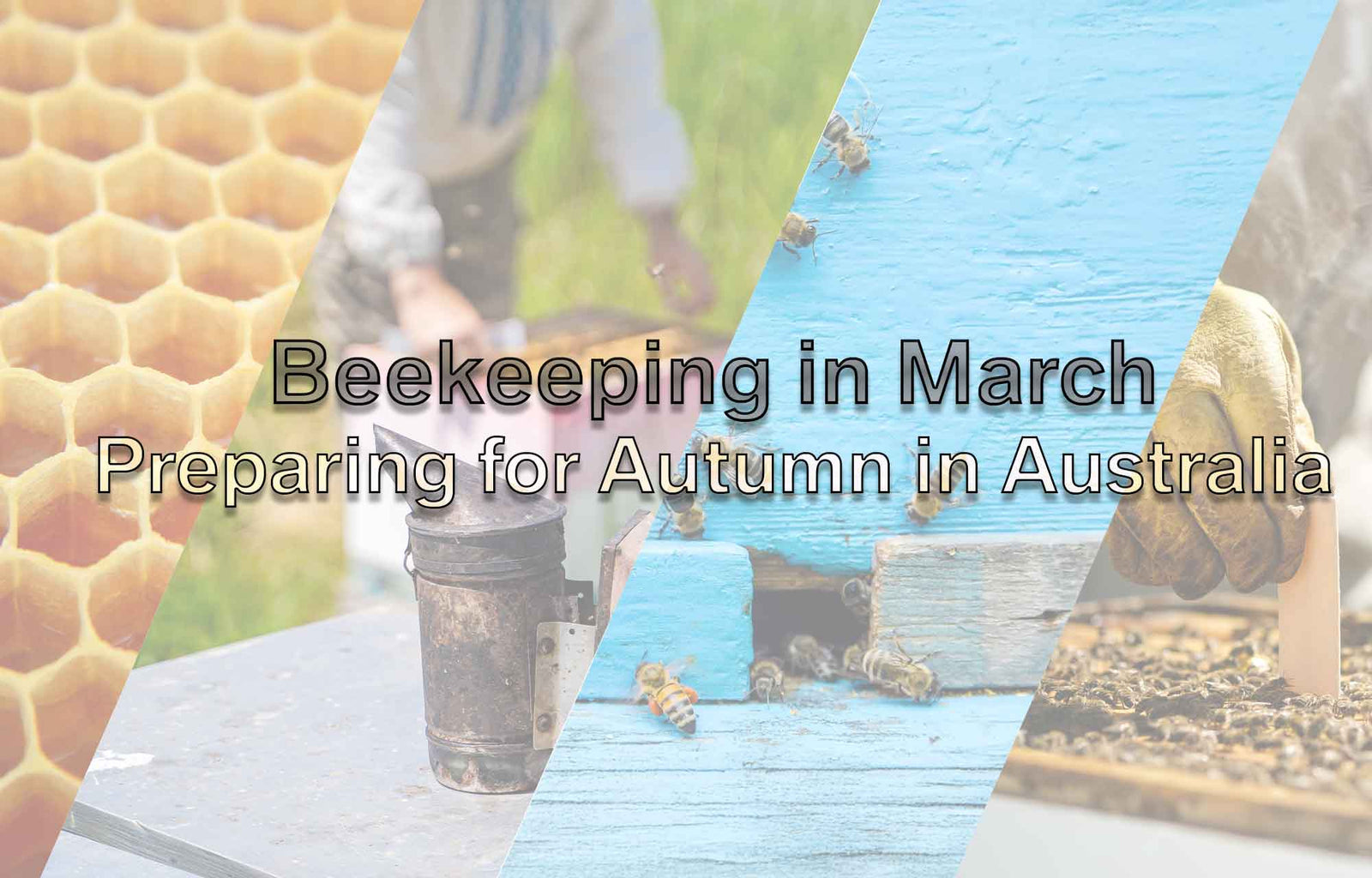As summer fades and autumn begins in Australia, beekeepers need to take essential steps to ensure their colonies are well-prepared for the cooler months ahead. March is a critical time to assess food supplies, adjust hive sizes, reduce entrances, and check for pests like the Varroa mite and wax moth. Here’s what you need to focus on:
1. Checking Food Supply for the Bees
With the changing season, it’s important to ensure your bees have sufficient food reserves to sustain them through winter. The main sources of stored food are honey and pollen, which are usually located in the outer frames of the brood boxes and upper honey supers. Inspect these areas carefully - if stores are low, consider supplementing their diet using a beekeeping feeder.
Types of Beekeeping Feeders
- Top Feeder: Placed above the hive, a top feeder allows bees to access sugar syrup while minimising exposure to robbing bees or pests. It is an efficient option, especially when feeding a large colony. Example of Top Feeders can be found here.
- Frame Feeder: These feeders replace a standard full-depth frame or two inside the brood box, allowing bees to feed directly from within the hive. This setup reduces exposure to external threats and is particularly useful for weaker colonies. Examples of Frame Feeders can be found here.
- Entrance Feeder: Positioned at the hive entrance, this feeder can be cheap and convenient for quick access but is generally not recommended for sugar syrup feeding. It can attract robbing bees and other pests, leading to increased hive vulnerability. Examples of Entrance Feeders can be found here.
If your bees require additional food, feeding them a high-energy sugar syrup is a recommended solution. For a step-by-step guide on making sugar syrup, check out this resource.
2. Reducing Hive Size
As the queen’s egg-laying rate declines and colony numbers decrease, maintaining excessive hive space can be counterproductive. A smaller hive volume means less area for bees to heat, allowing them to conserve energy and food resources.
How to Reduce Hive Size
- Downsize to a single or double brood box: Aim to reduce your colony to a single brood box where possible. However, larger colonies may still require two brood boxes at this stage.
- Reevaluate in April: In a month, you may find it possible to reduce the hive further, making final adjustments before winter.
Storing Removed Frames and Boxes
When removing excess drawn comb and super boxes, proper storage is critical. One of the biggest threats to stored frames in Australia is the wax moth. Without proper precautions, these pests can destroy comb and make it unusable in the spring.
Preventing Wax Moth Infestation
- Use Wax Guardian: This treatment helps prevent wax moth infestations without needing a freezer. Learn more about Wax Guardian here.
- Store frames properly: Keep stored frames in a dry, well-ventilated area to deter wax moths and other pests.
- Place in a freezer: Its essential if utilising this method that this method is repeated frequently because once out of the freezer, pests can return.
3. Reducing Hive Entrances
Smaller hive entrances provide multiple benefits during autumn and winter.
Why Reduce Hive Entrances?
- Heat Retention: A reduced entrance helps retain warmth inside the hive, making it easier for bees to maintain their optimal temperature.
- Prevention of Robbing: Rogue bee colonies and wasps can target weak hives. A smaller entrance makes it easier for guard bees to defend their colony.
- Protection from Pests: Mice and rats seek warm shelters during colder months and may attempt to enter beehives. Entrance reducers help keep them out.
- To view the range of Entrance Reducers, click here.
4. Checking for Pests and Varroa Mites
Autumn is a crucial time for mite control. Varroa mites can weaken a colony, making it more susceptible to winter losses. Conducting a thorough mite check ensures your bees enter the colder months in strong health.
How to Check for Varroa
- Alcohol Wash or Sugar Shake: These methods help determine mite infestation levels. Tools and Equipment that may assist you are here.
- Sticky Board Test: Placing a sticky board under the hive for a few days can reveal mite drop rates. Both 8 and 10 frames sticky mats can be found here.
Treating for Varroa
If mites are present, applying an appropriate treatment before winter is essential. Various chemical and natural treatment options exist, so selecting the right one based on your hive’s condition is key.
By following these steps in March, you can help your bees transition smoothly into autumn and ensure they are strong and healthy heading into winter. Keeping a close eye on food stores, adjusting hive sizes, reducing entrances, and monitoring for pest and Varroa mites will set your colony up for success in the months ahead.
Happy Beekeeping!

